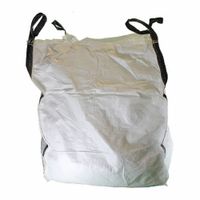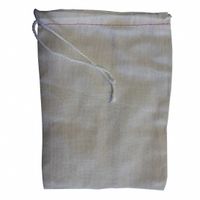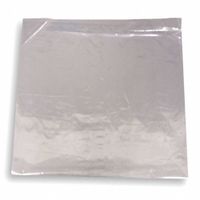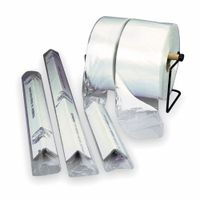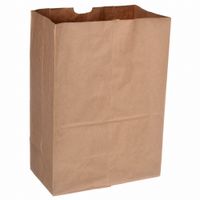Call +(254) 703 030 000 / 751 483 999 / 721 704 777
- Home
- Packaging Shipping
- Bags Equipment Accessories
.....Read More
Frequently Asked Questions
What are the best bags for organizing items?
The best bags for organizing items are those that offer a combination of compartments, durability, and versatility. Here are some top options:
1. **Backpacks with Multiple Compartments**: Backpacks like the SwissGear Travel Gear 1900 or the North Face Recon are excellent for organizing due to their multiple compartments, including padded laptop sleeves, front organizational pockets, and side water bottle holders.
2. **Tote Bags with Inserts**: Tote bags such as the Longchamp Le Pliage or the Baggu Duck Bag can be enhanced with bag organizers or inserts that provide pockets and dividers, making it easy to keep items like keys, phones, and cosmetics in place.
3. **Messenger Bags with Dividers**: Brands like Timbuk2 and Chrome Industries offer messenger bags with built-in dividers and pockets, ideal for organizing documents, gadgets, and personal items while maintaining a professional look.
4. **Packing Cubes for Travel Bags**: Packing cubes from brands like Eagle Creek or eBags are perfect for organizing clothes and accessories within larger suitcases or duffel bags, allowing for easy access and maximizing space.
5. **Diaper Bags with Specialized Pockets**: Diaper bags such as the Skip Hop Forma or the JuJuBe B.F.F. are designed with multiple pockets and compartments specifically for organizing baby essentials, from diapers to bottles.
6. **Tech Organizers**: Bags like the Peak Design Tech Pouch or the Bellroy Tech Kit are designed to keep cables, chargers, and small gadgets neatly organized, making them ideal for tech-savvy individuals.
7. **Convertible Bags**: Bags that can switch between styles, like the Fjällräven Kånken Totepack, offer versatility and multiple compartments for organizing various items, whether used as a backpack or tote.
These bags cater to different needs, ensuring that items are easily accessible and well-organized, whether for daily use, travel, or specific purposes.
How do bin liners protect contents from dust and dirt?
Bin liners protect contents from dust and dirt by serving as a barrier between the contents and the external environment. Made from materials like plastic, they are impermeable to dust particles and dirt, preventing these contaminants from reaching the items inside. The liners are designed to fit snugly within bins, ensuring that the contents are fully enclosed. This enclosure prevents dust and dirt from settling on the items, especially when the bin is moved or when there is air circulation that could carry particles.
Additionally, bin liners often have a smooth surface that repels dust and dirt, making it difficult for these particles to adhere. The liners can be sealed or tied at the top, further ensuring that no external contaminants can enter. This is particularly useful in environments where cleanliness is crucial, such as in medical or food service settings.
Moreover, bin liners can be easily replaced, ensuring that any dust or dirt that does accumulate on the liner itself does not come into contact with the contents. By regularly changing the liners, the risk of contamination is minimized. This protective function is essential for maintaining the hygiene and integrity of the contents, whether they are waste materials, recyclables, or other items that need to be kept clean.
What sizes do mattress and furniture bags come in?
Mattress and furniture bags are available in various sizes to accommodate different types of mattresses and furniture pieces. For mattresses, the sizes typically align with standard mattress dimensions:
1. **Twin**: Approximately 39 inches by 75 inches.
2. **Twin XL**: Approximately 39 inches by 80 inches.
3. **Full/Double**: Approximately 54 inches by 75 inches.
4. **Queen**: Approximately 60 inches by 80 inches.
5. **King**: Approximately 76 inches by 80 inches.
6. **California King**: Approximately 72 inches by 84 inches.
These bags are designed to fit snugly over the mattress, providing protection during moving or storage.
For furniture bags, the sizes are more varied due to the diverse shapes and sizes of furniture pieces. Common furniture bag sizes include:
1. **Chair Bags**: Typically around 42 inches by 68 inches.
2. **Sofa Bags**: Ranging from 60 inches by 110 inches to 92 inches by 134 inches, depending on whether they are designed for loveseats, standard sofas, or larger sectional pieces.
3. **Loveseat Bags**: Approximately 60 inches by 110 inches.
4. **Dining Chair Bags**: Usually around 46 inches by 76 inches.
5. **Recliner Bags**: Approximately 46 inches by 96 inches.
These bags are made from durable plastic or polyethylene materials to protect against dust, dirt, moisture, and pests. They often come with a sealable closure to ensure a secure fit. When selecting a bag, it's important to consider the specific dimensions of your furniture or mattress to ensure a proper fit.
How do you seal open-ended poly bags?
To seal open-ended poly bags, you can use several methods depending on the resources available and the level of sealing required:
1. **Heat Sealing**: This is the most common method. Use a heat sealer, which applies heat to the open end of the bag, melting the plastic and creating a seal. There are different types of heat sealers:
- **Impulse Heat Sealers**: Suitable for most poly bags, they use a short burst of heat and are ideal for low to medium volume sealing.
- **Constant Heat Sealers**: These are used for thicker materials and provide a continuous heat source, suitable for high-volume operations.
2. **Twist Ties**: For a quick and temporary seal, twist ties can be used. Simply gather the open end of the bag, twist it, and secure it with a twist tie. This method is not airtight but is useful for short-term storage.
3. **Cable Ties (Zip Ties)**: Similar to twist ties but more secure, cable ties can be used to tightly seal the bag. They are more durable and provide a stronger hold.
4. **Bag Clips**: These are reusable and can be used to seal bags temporarily. They are not airtight but are convenient for frequently accessed items.
5. **Adhesive Tapes**: Use strong adhesive tapes like packing tape to seal the open end. This method is simple and effective for temporary sealing.
6. **Staplers**: For a more permanent seal, a stapler can be used. However, this method may puncture the bag and is not suitable for liquid contents.
7. **Vacuum Sealers**: For an airtight seal, especially for food storage, vacuum sealers remove air from the bag before sealing it with heat.
Choose the method based on the material of the bag, the contents, and the desired level of sealing.
What are the benefits of reclosable poly bags?
Reclosable poly bags offer several benefits that make them a popular choice for packaging and storage across various industries.
1. **Versatility**: These bags are available in a wide range of sizes and thicknesses, making them suitable for storing and packaging a diverse array of items, from small components to larger products.
2. **Reusability**: The reclosable feature allows these bags to be opened and closed multiple times without losing their sealing capability, promoting reuse and reducing waste.
3. **Protection**: They provide excellent protection against dust, moisture, and other environmental factors, helping to preserve the quality and integrity of the contents.
4. **Convenience**: The easy-to-use closure mechanism, such as a zipper or slider, offers quick access to the contents, enhancing user convenience.
5. **Cost-Effectiveness**: Reclosable poly bags are generally affordable, providing a cost-effective packaging solution for businesses and consumers alike.
6. **Transparency**: The clear material allows for easy identification of the contents without the need to open the bag, saving time and effort.
7. **Customization**: These bags can be customized with logos, labels, or other branding elements, making them an effective tool for marketing and brand recognition.
8. **Space Efficiency**: They are lightweight and can be stored flat, optimizing storage space and reducing shipping costs.
9. **Compliance**: Many reclosable poly bags meet regulatory standards for food safety and other industry-specific requirements, ensuring compliance and safety.
10. **Environmental Impact**: Some reclosable poly bags are made from recyclable materials, contributing to environmental sustainability efforts.
Overall, reclosable poly bags offer a practical, efficient, and versatile packaging solution that meets the needs of both businesses and consumers.
How do you use poly tubing for customizable storage?
Poly tubing is a versatile material that can be used for customizable storage solutions. To use poly tubing for storage, follow these steps:
1. **Select the Right Size**: Choose poly tubing with the appropriate width and thickness based on the items you plan to store. Consider the weight and dimensions of the items to ensure the tubing can accommodate them.
2. **Cut to Desired Length**: Measure and cut the poly tubing to the desired length using scissors or a utility knife. This allows you to create storage bags or sleeves that fit your specific needs.
3. **Seal One End**: Use a heat sealer or an impulse sealer to seal one end of the cut tubing. This creates a closed end, forming a bag or pouch. If a heat sealer is unavailable, you can use strong adhesive tape as an alternative.
4. **Insert Items**: Place the items you wish to store inside the open end of the tubing. Ensure the items fit comfortably without stretching the material excessively.
5. **Seal the Other End**: Once the items are inside, seal the open end of the tubing using the same method as before. This secures the contents and protects them from dust, moisture, and other environmental factors.
6. **Label and Organize**: Use labels or markers to identify the contents of each bag. This helps in organizing and retrieving items easily when needed.
7. **Store Appropriately**: Arrange the sealed poly tubing bags in storage bins, drawers, or shelves. Ensure they are stored in a cool, dry place to maintain the integrity of the material and the items inside.
By following these steps, poly tubing can be effectively used to create customizable storage solutions for various items, from small parts and tools to clothing and documents.
What materials are used in making bin liners?
Bin liners, commonly known as trash bags or garbage bags, are primarily made from various types of plastic materials. The most common materials used include:
1. **Low-Density Polyethylene (LDPE):** This is the most prevalent material for bin liners. LDPE is known for its flexibility, strength, and resistance to tearing. It is used for making both thin and thick bin liners, providing a balance between durability and cost-effectiveness.
2. **High-Density Polyethylene (HDPE):** HDPE is used for making thinner, more lightweight bin liners. These liners are less flexible than LDPE but are more resistant to punctures and tears. They are often used for lighter loads and are more cost-effective for large-scale use.
3. **Linear Low-Density Polyethylene (LLDPE):** This material combines the properties of LDPE and HDPE, offering enhanced strength and flexibility. LLDPE is often used for heavy-duty bin liners that need to withstand significant weight and rough handling.
4. **Biodegradable Plastics:** With increasing environmental concerns, biodegradable plastics made from plant-based materials like cornstarch or polylactic acid (PLA) are becoming popular. These materials break down more quickly than traditional plastics, reducing environmental impact.
5. **Recycled Plastics:** Some bin liners are made from recycled plastic materials, which help reduce waste and promote sustainability. These liners may be made from post-consumer or post-industrial recycled content.
6. **Compostable Materials:** Compostable bin liners are designed to break down in composting environments. They are typically made from natural materials like starches, cellulose, or other organic polymers.
These materials are chosen based on factors such as strength, flexibility, cost, and environmental impact, catering to different needs and preferences in waste management.
How do you choose the right size for a mattress bag?
To choose the right size for a mattress bag, first determine the dimensions of your mattress. Measure the length, width, and thickness. Standard mattress sizes include Twin (38"x75"), Twin XL (38"x80"), Full (54"x75"), Queen (60"x80"), King (76"x80"), and California King (72"x84"). However, variations exist, so precise measurements are crucial.
Next, consider the thickness of your mattress. Mattresses can range from 6 inches to over 18 inches thick, especially with pillow tops or additional layers. Ensure the bag can accommodate this depth.
When selecting a mattress bag, look for one slightly larger than your mattress dimensions to allow for easy insertion and to accommodate any additional bedding or mattress toppers. A bag that is too tight can tear during handling.
Consider the purpose of the bag. For moving, a thicker, more durable bag is ideal to protect against tears and punctures. For storage, a bag with a secure seal is essential to protect against moisture, dust, and pests.
Check the material of the bag. Polyethylene is common for its durability and water resistance. Ensure the bag is thick enough, typically 2-4 mils, to withstand handling.
If you plan to use the bag for long-term storage, consider a bag with a vacuum seal feature to reduce air and save space. Ensure the bag is compatible with your vacuum cleaner.
Finally, read reviews and product descriptions to ensure the bag meets your needs. Some bags are designed specifically for certain mattress types, like memory foam or innerspring, which may affect the fit.
By considering these factors, you can select a mattress bag that provides the best protection and fit for your mattress.
What is the difference between open-ended and reclosable poly bags?
Open-ended poly bags and reclosable poly bags are both types of plastic bags used for packaging, but they differ in design and functionality.
Open-ended poly bags are simple plastic bags with one open end. They are typically used for packaging items that do not require resealing after opening. These bags are often sealed using heat sealers, twist ties, or tape. They are ideal for single-use applications or when the contents do not need to be accessed repeatedly. Open-ended bags are commonly used in industries for packaging products like clothing, food items, or hardware.
Reclosable poly bags, on the other hand, come with a built-in closure mechanism, such as a zipper or a press-to-close seal. This feature allows the bag to be opened and closed multiple times, making them suitable for products that need to be accessed frequently or stored securely after opening. Reclosable bags are often used for packaging items like snacks, small parts, or documents. They provide convenience and help in maintaining the freshness or integrity of the contents.
In summary, the primary difference lies in the closure mechanism: open-ended bags require external sealing methods and are typically for single-use, while reclosable bags have built-in closures for repeated access and secure storage.
How do you properly store items using poly bags and tubing?
To properly store items using poly bags and tubing, follow these steps:
1. **Select the Right Material**: Choose poly bags and tubing made from polyethylene or polypropylene, depending on the required durability and clarity. For food items, ensure the material is food-grade.
2. **Determine the Size**: Measure the items to be stored and select bags or tubing that provide enough space without excessive slack. For tubing, cut to the desired length, allowing extra for sealing.
3. **Clean and Dry Items**: Ensure items are clean and dry before storage to prevent mold or contamination.
4. **Insert Items Carefully**: Place items gently into the poly bags or tubing to avoid tearing. For tubing, slide items in and cut to the appropriate length.
5. **Seal the Bags**: Use heat sealers, zip locks, or twist ties to close the bags. For tubing, heat seal both ends after inserting the item. Ensure the seal is airtight to protect contents from moisture and dust.
6. **Label the Bags**: Use a permanent marker or adhesive labels to note the contents and date of storage. This helps in easy identification and inventory management.
7. **Store Appropriately**: Place the sealed bags in a cool, dry place away from direct sunlight. For fragile items, store in a way that prevents crushing or damage.
8. **Monitor and Rotate**: Regularly check the condition of stored items and replace any damaged bags. Rotate items to use older stock first, ensuring freshness and quality.
By following these steps, you can effectively use poly bags and tubing to protect and organize items, maintaining their quality and extending their shelf life.

